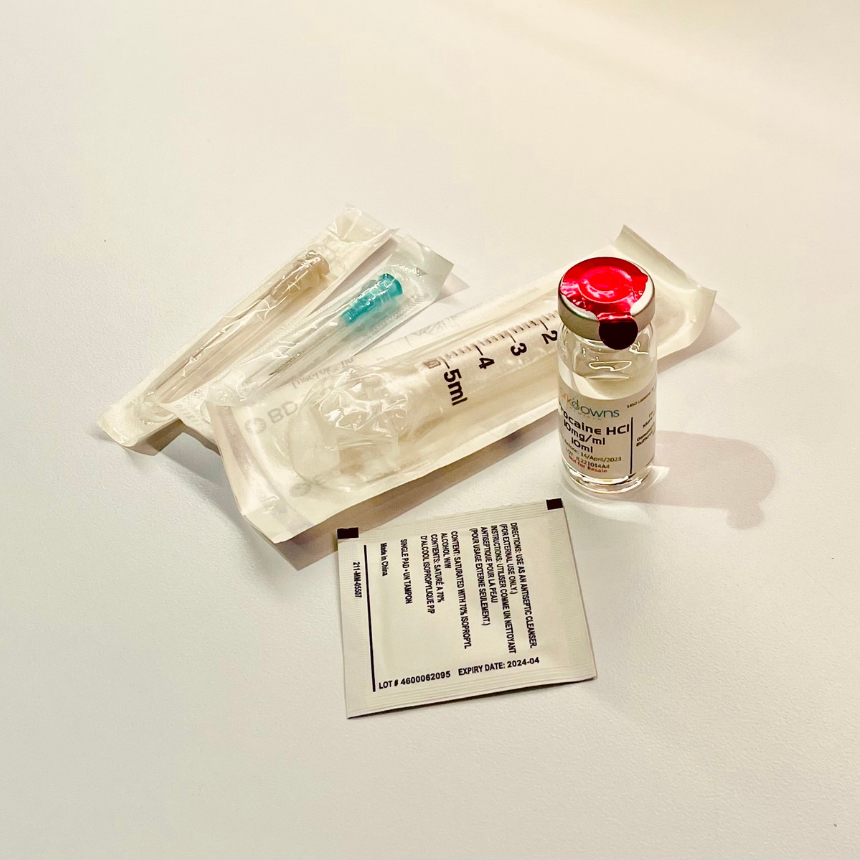
Dr. Christine Kadykalo, ND • May 4, 2023
Neural Therapy for Pain and Rehabilitation
What is Neural Therapy?
Neural therapy is a system-resetting therapy in which local anesthetics are injected into a specific region of the body. This local anesthetic, or Procaine, is a short-acting anesthetic that can be cleared from the body within 20 minutes. Compared to other anesthetics, Procaine has the added benefit of increased tissue circulation and healing due to its breakdown products. Additionally, these breakdown products can also help to reduce inflammation. Neural therapy treatment is often used for chronic pain, tissue changes, or trigger points. Developed in Germany in the early 1900s, it's considered a safe practice and a great alternative to prescription oral medications for those wanting to avoid side effects.
Developed in Germany in the early 1900s, it's considered a safe practice and a great alternative to prescription oral medications for those wanting to avoid side effects.
MECHANISM:
Neural therapy is based on the theory that trauma and surgery often damage the autonomic nervous system, resulting in long-standing disturbances in the tissues. The autonomic nervous system is responsible for controlling all unconscious body functions, such as heart rate, breathing, blood flow, and digestion. If the nerve path is interfered with, the function of the connected body part is affected, which presents as pain, disability, and disease. The purpose of neural therapy is to reset and correct the interfered nerve path by using specific injections into areas of disturbance.
Neural therapy can also be used for organ diseases, such as gallbladder conditions, inflammatory bowel disease, chronic infections, etc.
USES:
Neural therapy is beneficial in chronic pain as it resets the feedback loop of pain and in turn will stimulate the nervous system to either heal the area or break the cycle of unnecessary pain signals. Neural therapy may be applied over scars to help restore function of damaged nerves and help to break down the fibrous tissue and collagen deposits that can often attach to normal tissues.
A slightly different technique with the same medicine can also be used to address trigger points or sore, stiff muscles. A trigger point is a taught band in the muscle that is painful when pressed. It can cause referred pain as well. It is often caused by injury or overuse of the muscle. By injecting procaine into the trigger point it allows the muscle to release and relax.
Neural therapy can also be used for organ diseases, such as gallbladder conditions, inflammatory bowel disease, chronic infections, etc. This technique is called segmental therapy. By injecting into specific points on the skin correlated with the organ, we can improve circulation and nerve function to that organ.

FAQ:
What is it?
In Injections of procaine, a short acting anesthetic, to reset the nervous system and to release spastic muscles / trigger points.
What is involved?
A set of injections into the painful muscles, scars, nerve sites, acupuncture points or other tissue. The procedure takes about 15 minutes. Anywhere from 2-10 treatments are required depending on the severity of the case.
Side effects are rare but they can include allergy as in the case of introducing any new medicine into the body
What does it feel like?
Nobody enjoys needles; however, the gain is usually worthwhile. The injection feels like a little sting but the discomfort lasts only for a moment and then is followed by tissue relaxation.
Are there any side effects?
Side effects are rare but they can include allergy as in the case of introducing any new medicine into the body, vasovagal reaction (lightheaded), and mild bruising. Some patients report a temporary worsening of symptoms for a few days followed by improvement in symptoms, which is also considered a positive reaction. The medicine, procaine does not need to be broken down in the liver and therefore has no relative toxicity.
Anything else I should expect?
There is often an emotional or memory release accompanied with physical release. Integrating other therapies can help treat the whole body and these therapies will often be more effective after neural therapy injections. For example, acupuncture, craniosacral, chiropractic adjustment, detoxification and/or counseling.
What conditions can be addressed with Neural Therapy?
・Chronic pain
・Spastic muscles and trigger points
・Post-surgery healing
・Scars
・Traumatic Brain Injury, Post-Concussive Syndrome
・Whiplash injury
・Digestive concerns - Constipation, IBS, Crohn's, Colitis, Gallbladder Disease, Acid Reflux
・Recurrent UTIs
・Chronic infections
BOOK A COMPLIMENTARY CONSULTATION
Dr. Christine Kadykalo, ND • May 4, 2023
REFERENCES:
https://www.sciencedirect.com/topics/medicine-and-dentistry/neural-therapy
(2) Neural Therapy and Its Role in the Effective Treatment of Chronic Pain
http://www.klinghardtacademy.com/protocols/klinghardt-lecture-neural-therapy-and-the-brain.html
(4) Comparison of efficacy of neural therapy and physical therapy in chronic low back pain
https://pubmed.ncbi.nlm.nih.gov/24146471/
(5) Pain, Scars and Neural Therapy
https://ndnr.com/pain-medicine/pain-scars-and-neural-therapy/
(6) Painful trigger points in surgical scars
https://pubmed.ncbi.nlm.nih.gov/7200742/
The information contained on this website is provided for informational purposes only and does not constitute medical advice, a diagnosis, or replace that of your healthcare practitioner. If you need medical assistance, please consult your healthcare provider.

